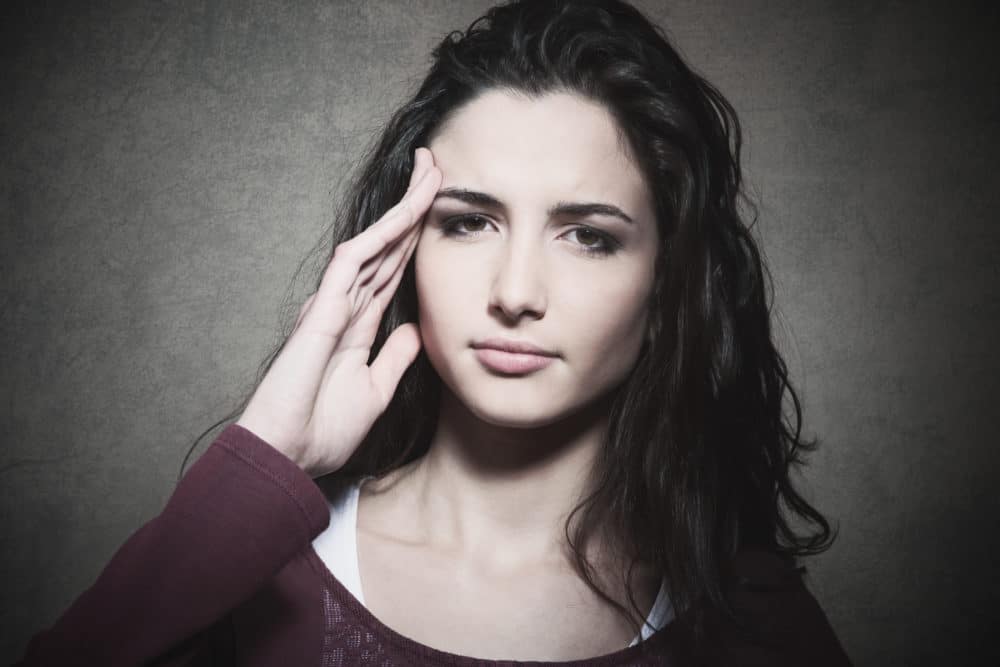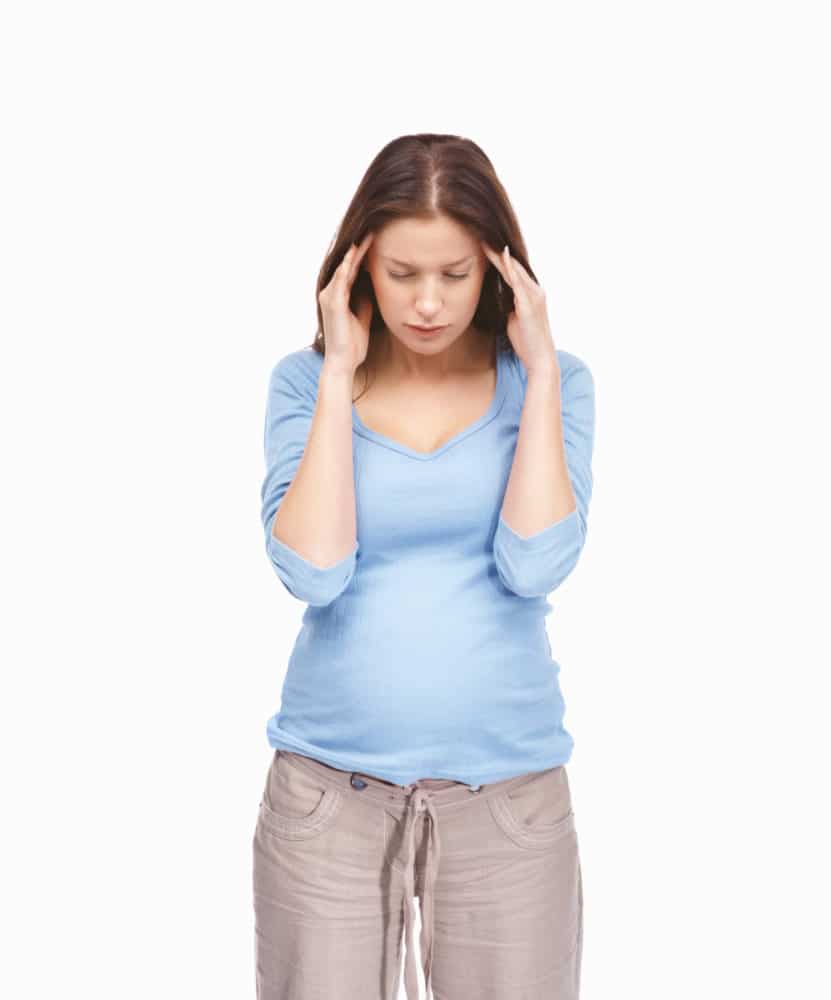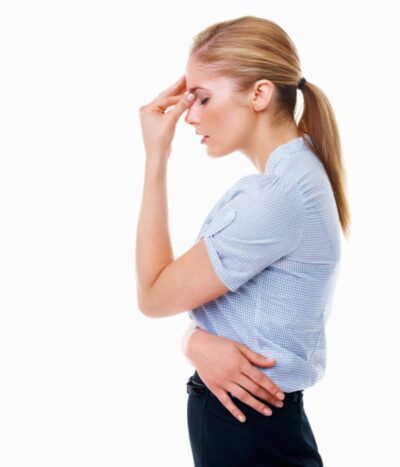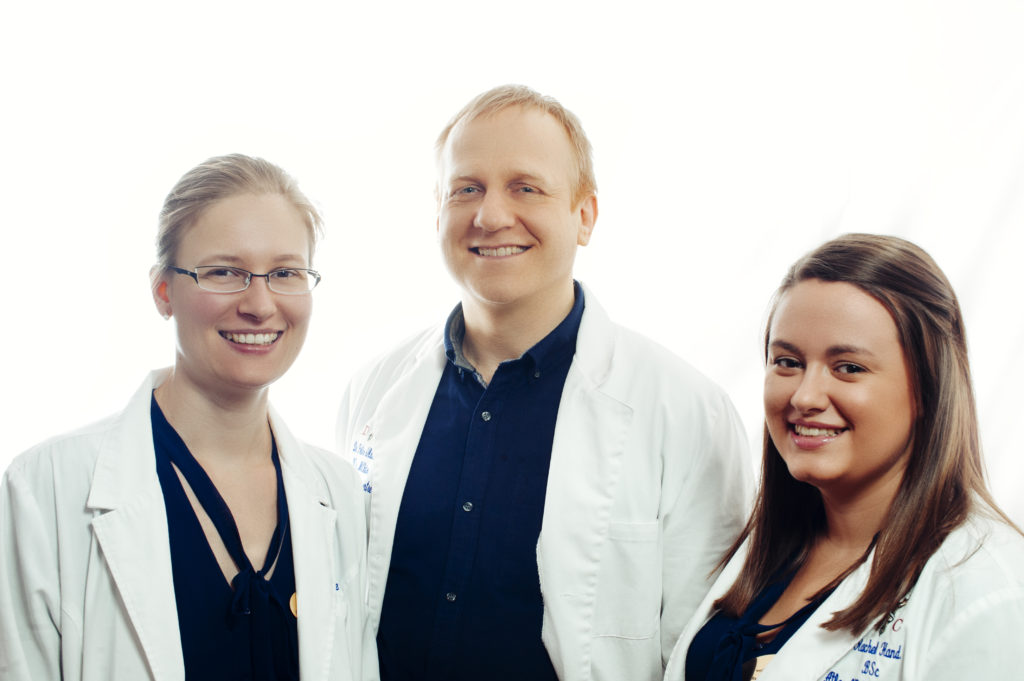Get Your Migraines Treated Sooner & Save 77% Off Your Consultation
Treating Migraines With Manual Therapy & Other Natural Approaches
Anyone who suffers from migraines knows how debilitating they can be.
In England every day, it is estimated that there are 190,000 migraine attacks.
With six million people suffering from migraines in the country, it is a major cause of sick days at work and school.
Given its high prevalence, the effectiveness of standard medical treatments is patchy at best.
Could manual therapies, completely overlooked by the medical establishment when it comes to treating migraine, provide genuine and permanent relief from the pain?

Leave your name and number in the form below or Call Us Now On 01234 340 317
What are migraines?
Migraine headaches are a particular type of headache that causes acute throbbing pain, usually over one eye or on one side of the head.
Other side effects may occur before or at the same time as the headache pain, including:
– Auras
– Blurred Vision
– Sensitivity to light and sound
– Nausea
– Vomitting
– Tiredness
Migraines can last from a few hours up to 72 hours, in the worst cases. They are more common in women than men and most common from teenage years until late middle age, though they can occur at any stage of life.
While the cause of migraine is often unknown, some people can identify certain triggers, such as:
– Stress or anxiety
– Hormonal changes
– Tiredness and insufficient sleep
– Dietary factors
– Alcohol or caffeine
– Environmental factors like heat or pollution
– Some medications
The variety of different causes of migraines makes them challenging to treat.

Standard medical responses to treating migraines
Most people manage their migraines with over-the-counter medications, such as:
– NSAIDs like ibuprofen
– Paracetamol (Acetaminophen)
– Naproxen
– Aspirin with caffeine
Most people manage their migraines with over-the-counter medications, such as:
– Certain antidepressants
– Coenzyme Q10
– Herbal extracts
– Magnesium citrate
– Vitamin B-12 supplements
– Riboflavin
In the past decade, there have also been more cases of surgical intervention for migraines. This usually involves injections of botulinum toxin (Botox) to spinal nerves that have been linked to migraines.
The Botox relaxes the muscles and reduces compression on the nerves, potentially reducing or eliminating pain.
However, the longer-term effects of Botox injections are not known, which makes it less than ideal as a long-term treatment.
Leave your name and number in the form below or Call Us Now On 01234 340 317
Manual therapy and migraines in children
Migraines in children are common. Problems can often continue into adulthood or halt as hormonal changes take place.
A study from 2010 looked at the safety and effectiveness of spinal manipulative therapy (SMT) in children with migraine-type headaches. It was a case report on an 11-year old boy who had experienced recurrent headaches for the previous four years.
His prescribed medications provided limited relief from the headaches. It is worth reading about the treatment and results from the study:
“SMT characterized as high-velocity, low amplitude (HVLA)-type thrusts to sites of spinal segmental dysfunction was the primary approach to patient care.3 The patient attended five visits over a period of four weeks. The patient reported experiencing only one ‘mild’ headache attack during this period. In the second month of care at one visit per week, the patient did not experience any headache attacks. The patient returned for care nine months later, with the patient reporting only a ‘couple of mild headaches but no migraine-type headaches.”
“The patient underwent a course of care at a frequency of once every week for another four weeks. Follow-up evaluation six months later revealed the patient to be symptom-free. At his mother’s request, the patient attends chiropractic care for preventive measures at a frequency of one time every six months.”
The study authors also reviewed the medical literature with regards to SMT and treatment for headaches and noted that “SMT was effective regardless of headache diagnosis”.
An earlier study in Australia in 2000 was a major randomized controlled trial of 127 volunteers who had at least one migraine a month.
This study was conducted over six months, with two months of data collection, two months of SMT treatment, and two months of data collection after treatment.
Participants were aged between 10 and 70 and received a maximum of 16 SMT treatments.
According to the migraine diaries kept by participants, those receiving treatments showed statistically significant improvement in migraine frequency and medication use when compared with the control group.
Approximately half of the volunteers reported significant improvement in the morbidity of each episode:
“The results of this study support previous results showing that some people report significant improvement in migraines after chiropractic SMT. A high percentage (>80%) of participants reported stress as a major factor for their migraines. It appears probable that chiropractic care has an effect on the physical conditions related to stress and that in these people the effects of the migraine are reduced.”
Manual therapy and adult migraine
For adults with migraines, several other interesting studies demonstrate the effectiveness of manual therapies.
A 2003 study looked at the role of chiropractic rehabilitation in treating a case of chronic recurrent migraine headaches in a 22-year-old female patient.
Her symptoms of left frontal retro-orbital head pain, nausea, and visual auras persisted despite multiple medical interventions and no history of trauma.
She was treated with rehabilitative exercises in combination with chiropractic manipulation:

“The chronic recurrent migraine resolved over a 12-week period with use of chiropractic rehabilitation in this patient. More research is necessary to determine whether this approach is consistently reproducible and how it compares with spinal manipulation alone and other forms of treatment.”
In 2004, a U.S. study considered the use of an upper cervical technique in the case of a 23-year-old male patient who had suffered a sporting accident six years earlier.
During this period, he had sought treatment from many physicians for bipolar disorder, sleep disorder, seizure disorder, neck and back pain, and migraine headaches.
Manual therapy using an upper cervical technique was administered to correct and stabilize the patient’s upper neck injury, with assessments in the following months noting the following results:
“After 1 month of care, the patient reported an absence of seizures and manic episodes and improved sleep patterns. After 4 months of care, seizures and manic episodes remained absent and migraine headaches were reduced from 3 per week to 2 per month. After 7 months of care, the patient reported the complete absence of symptoms. Eighteen months later, the patient remains asymptomatic.”
A 2005 study then looked at the effect of manual therapy for a patient suffering from migraine headaches after a car accident:
“The patient’s range of motion, flexibility, and strength improved following a regimen of spinal manipulation and active and passive therapeutic care. After 12 weeks of treatment, the duration, frequency, and intensity of her migraines decreased.”
“This case offers an example of the potential effects of chiropractic and rehabilitative treatment for migraine headache sufferers.”
In 2008, manual therapy was again shown to produce remission in the case of chronic migraine in a 72-year-old female patient.
Remarkably, this patient had a 60-year history of migraine headaches, including nausea, vomiting, photophobia, and phonophobia. Episodes occurred once or twice a week and lasted for 1-3 days before treatment.
After her treatment with SMT:
“She reported all episodes being eliminated …there had been no other lifestyle changes that could have contributed to her improvement. She also noted that the use of her medication was reduced by 100%. A 7-year follow-up revealed that the person had still not had a single migraine episode in this period.”
The conclusion from the authors of this study was as follows:
“This case highlights that a subgroup of migraine patients may respond favourably to CSMT. While a case study does not represent significant scientific evidence, in context with other studies conducted, this study suggests that a trial of CSMT should be considered for chronic, nonresponsive migraine headache, especially if migraine patients are nonresponsive to pharmaceuticals or prefer to use other treatment methods.”.
Other natural ways to treat migraine
Manual therapies are not the only natural method for treating migraines.
Migraine sufferers have often tried these approaches before seeking medical help for their condition and they include:
– Dietary changes (such as avoiding chocolate or foods with nitrates)
– Natural oils like lavender oil and peppermint oil
– Herbs such as feverfew
– Acupressure or massage
– Yoga
– Biofeedback (relaxation) or meditation
One of the best methods we’ve encountered is supplementation with fish oil, which is rich in omega-3 polyunsaturated fatty acids.
A study from 2002 looked at the management of recurrent migraines in adolescents using this method, with encouraging results.
A total of 23 adolescents suffering from frequent migraines for at least one year completed a randomized, double-blind, cross-over study in the U.S.
Participants were supplemented with fish oil for two months, then went through a one-month “washout period”, and then two months of placebo (olive oil). They then self-assessed the severity and duration of their headaches.
Compared with the frequency of headaches before the study, there was a significant reduction in headache frequency during fish oil treatment and during placebo treatment:
“Patients experienced a similar reduction in frequency, duration, and severity of headaches during treatment with fish oil and during treatment with olive oil. Although there was no significant difference between treatments, the marked improvement from baseline experienced by the patients suggests that the effect should not be dismissed as simply a placebo effect. In fact, results of this preliminary study suggest that both fish oil and olive oil may be beneficial in the treatment of recurrent migraines in adolescents.”
Natural solutions to debilitating problems
For individuals with recurrent migraines, it may seem that light at the end of the tunnel is in short supply.
You’d have to travel far to find a GP in the UK who would refer you to a manual therapist if you complained of migraines.
The NHS website mentions acupuncture and transcranial magnetic stimulation (TMS) for the treatment and prevention of migraines. However, there is no mention of manual therapy.
Yet the evidence for the beneficial effects of spinal manual therapy for migraine sufferers is strong.
When we bear in mind its cost-effectiveness, safety, and lack of side effects, manual therapy could be a powerful weapon in the fight against the types of debilitating headaches that affect so many people around the country.

Spine, Body & Health Treatment & Therapy
Getting your Migraines treated is simple. It all starts with a consultation with one of our spinal specialists at Spine, Body & Health.
This consultation is, in our opinion, the best in the area as it gives complete clarity and understanding about why you are truly in pain. With this information we can then give you a structured and personalised recommendation of care to help treat your migraines.
Click the button below to start your journey with Spine, Body & Health.

Save 77% Off Your Consultation
Click the Button or Call Us Now on 01234 340317
Book Your Consultation Today!
If you’re suffering then we want to help.
Fill out the form to the right and one of our team will contact you to get you booked in for your initial consultation.
They will be on hand to answer any questions you have and talk you through how you can save up to 77% off the consultation fee, instantly.
We look forward to meeting you and helping you on your journey!
Dr. Peter Olsson
Fill out this form to receive health news, exclusive discounts and learn how to book your consultation.
We will take a £10 deposit to secure your consultation.
References
Joel Alcantara and Kyle J. Pankonin. Chiropractic care of a pediatric patient with migraine-type headaches: a case report and selective review of the literature. EXPLORE January/February 2010, Vol. 6, No. 1
Stacy Peters Harris. Chiropractic management of a patient with migraine headache. J Chiropr Med 2005;4:25–31
Clark Davis. Chronic migraine and chiropractic rehabilitation: A case report. J Chiropr Med 2003;2:55–59
Peter J. Tuchin. A case of chronic migraine remission after chiropractic care. Journal of Chiropractic Medicine (2008) 7, 66–70
Peter J. Tuchin. A Randomized Controlled Trial of Chiropractic Spinal Manipulative Therapy for Migraine. J Manipulative Physiol Ther 2000;23:91-5
Erin L. Elster. Treatment of bipolar, seizure, and sleep disorders and migraine headaches utilizing a chiropractic technique. J. Manipulative Physiol Ther 2004;27:e5
Zeev Harel. Supplementation With Omega-3 Polyunsaturated Fatty Acids in the Management of Recurrent Migraines in Adolescents. Journal of Adolescent Health 2002;31:154–161
NHS website – Migraine Treatment. Accessed on 3rd Feb 2020:
Disclaimer: Every effort has been made to accurately represent all services provided by Spine, Body & Health. There is no guarantee that you will get specific results by working with us. Examples on this site are not to be interpreted as a promise or guarantee.
Your level of success in attaining the results claimed on this site and by our staff depend on several factors, such as your background, motivation, commitment, and actions. Since these factors differ according to individuals I cannot guarantee your success, nor am I responsible for any of your actions. Results may vary.
© Copyright 2021 Spine, Body & Health. All Rights Reserved.
